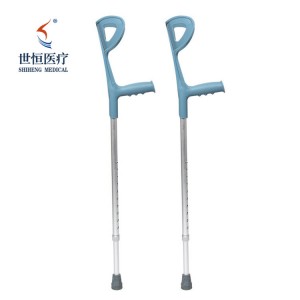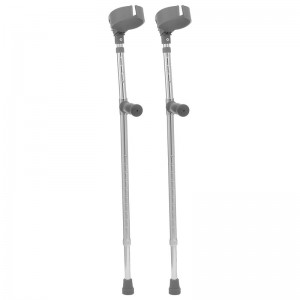Crutches and walking sticks are commonly used auxiliary devices when the lower limbs are inconvenient to move. For example, patients with severe hip joint, knee arthritis or ankle disease, and elderly people who have no injuries but have inconvenient legs and feet are also recommended. A walking stick or crutches can prevent the affected limb from bearing weight, help maintain body balance, and make daily life safer. But there are many precautions for choosing and using walking sticks.

When choosing a crutch, pay attention to its quality, and it must be stable. The rubber pad of the armpit support part should be elastic, and the bottom end of the crutches should have a rubber tip. And if you feel weak in your body or legs, walking unsteadily, sprained and painful lower limb joints, or have knee osteoarthritis, you can choose to use a cane. Many elderly people do not want to use a stick for fear of being seen as a sign of aging, but using a stick can indeed make you more comfortable, safe and independent.
When using crutches, when standing straight, the upper edge of the crutches should be about 2 fingers under the armpit. The armrest of the crutches should be at the height of the hip line, or where the hands are drooping when standing, and the position of the wrists. When holding the armrest, the elbow bends slightly. In order to prevent damage to the nerves and blood vessels under the armpits, when standing and walking, the body should be supported by hands instead of the armpits.
When walking, lean forward slightly and move the crutches forward about 30 cm. At first, it seems to be going forward with the injured leg, but actually shifts the weight to the crutches. The body moved forward between the crutches, and finally it was supported on the ground with a good leg. When the legs stand firm, move forward with crutches to prepare for the next step. When walking, look ahead, not under your feet. When sitting, turn your back to a stable chair (preferably with armrests). Hand the crutches to one hand, touch the chair back with the other hand, and then sit down slowly. After sitting down, turn the crutches upside down and place them within reach of your side to prevent the crutches from slipping.

When you want to stand up, move your body forward slightly, put your crutches on the hand on the side of your injured leg, prop up your body, and use your legs to support it. When going up and down the stairs, hold the handrails with one hand and the crutches with the other. When going upstairs, the good leg is in front, the injured leg is behind, and the good leg is used to carry the injured leg. When going downstairs, the injured leg is in front and the good leg is behind. Jump off with good legs one by one. If the stairs don't have handrails, you can only jump up and down with your arms around. Remember "good legs go up first, bad legs go down first."
Name: Mr.Liu
Mobile:0086-18617909888
Tel:0086-318-7591119
Email:kevin@shiheng-medical.com
Add:Development Zone, Anping County, Hebei